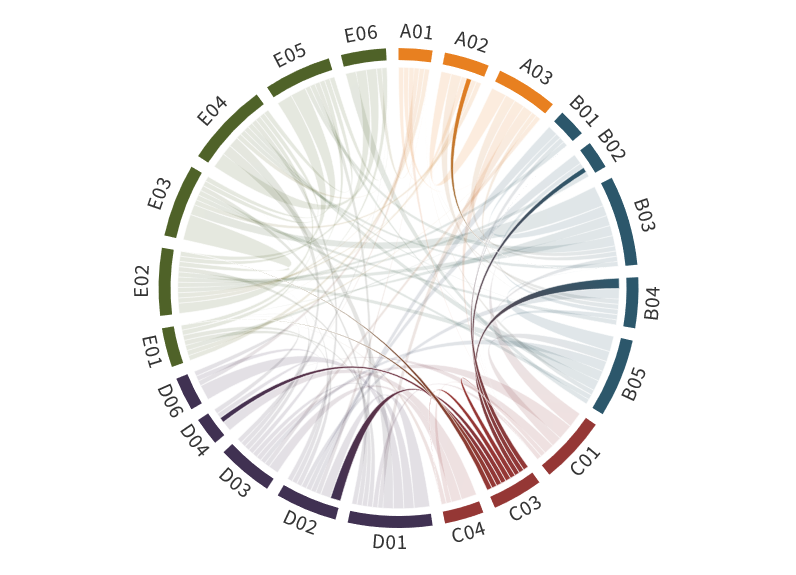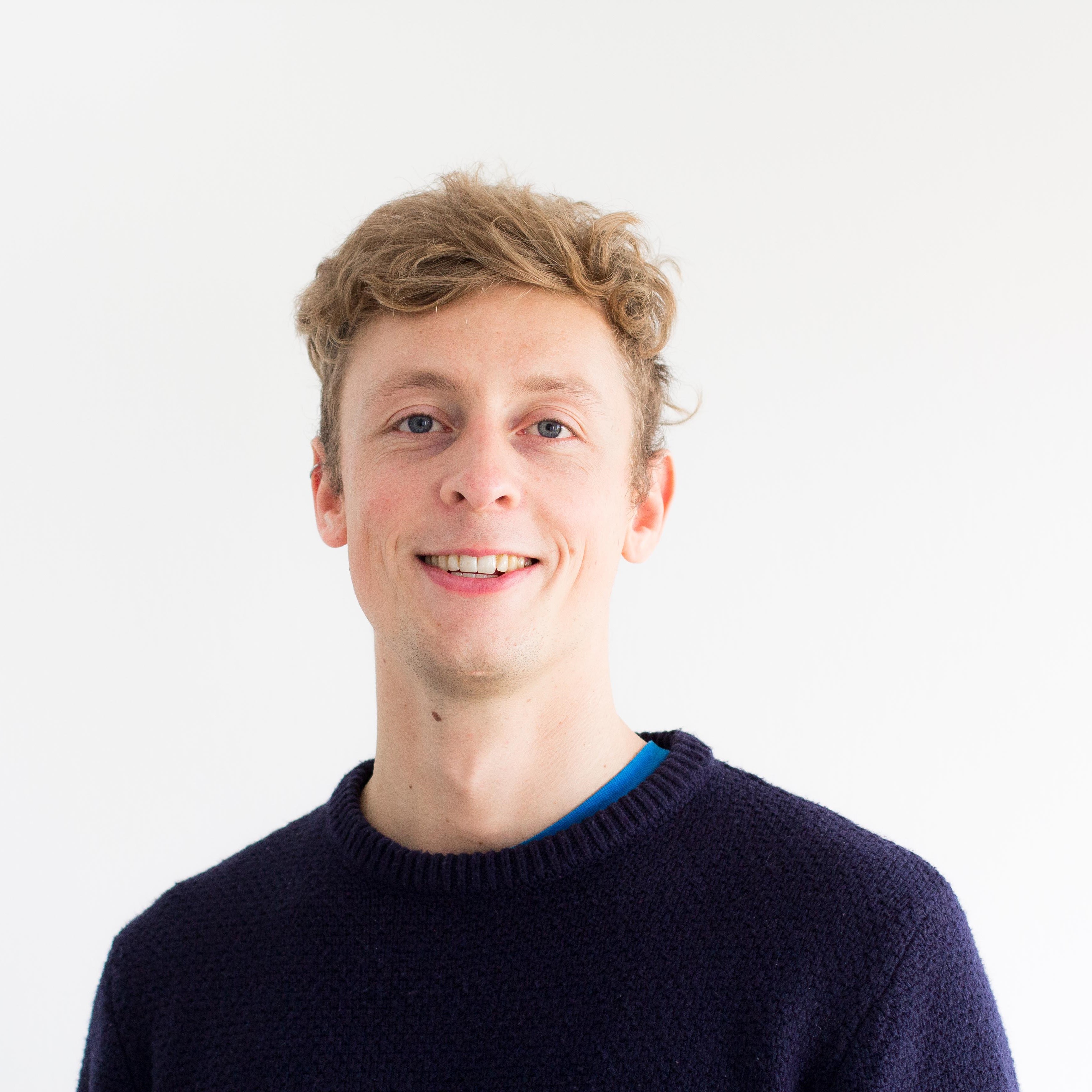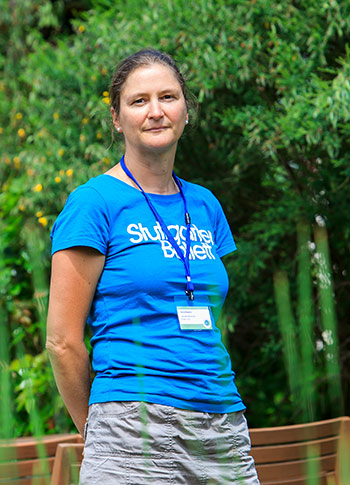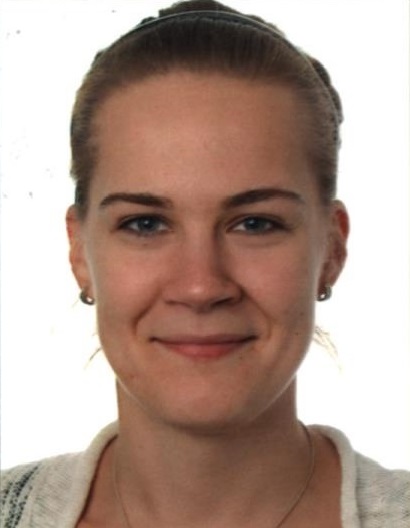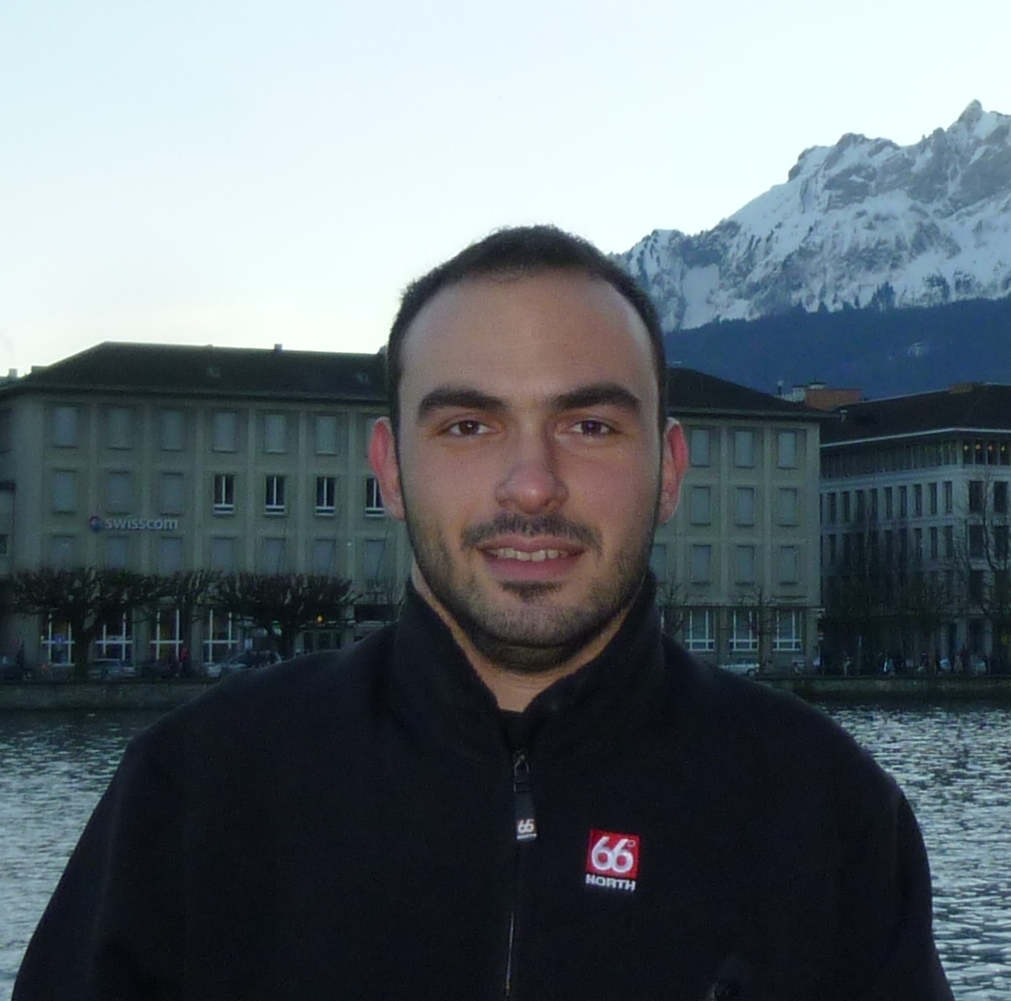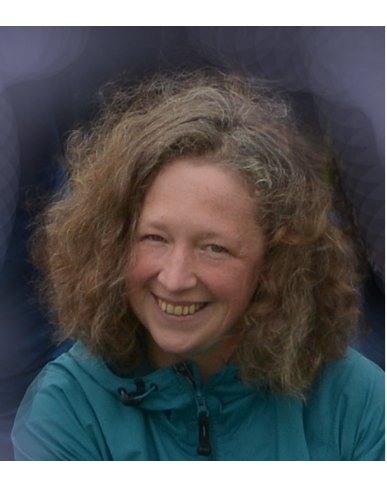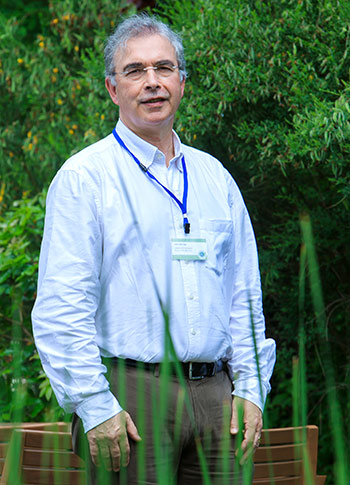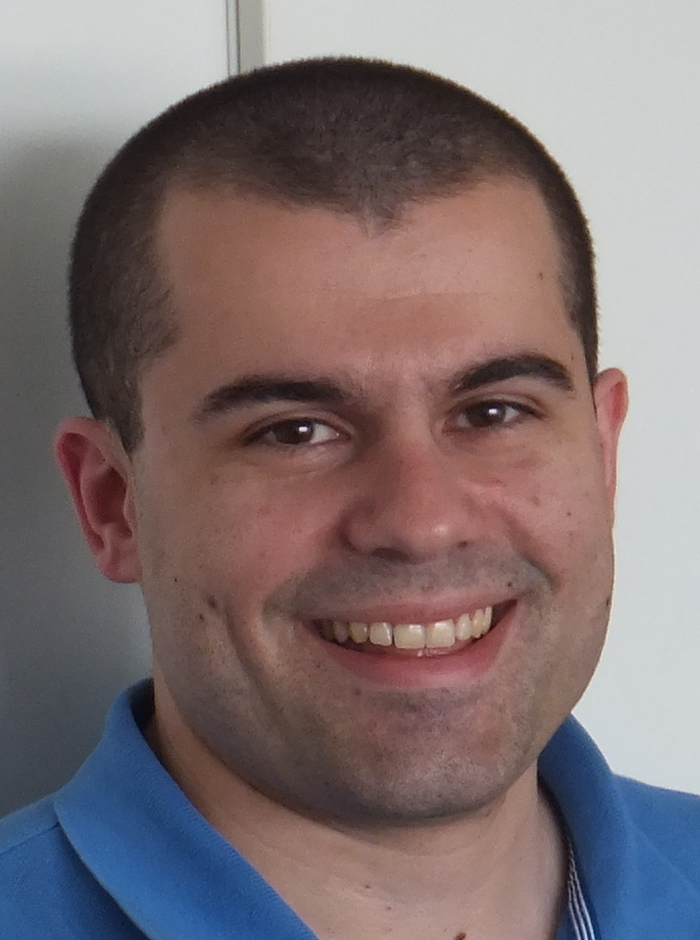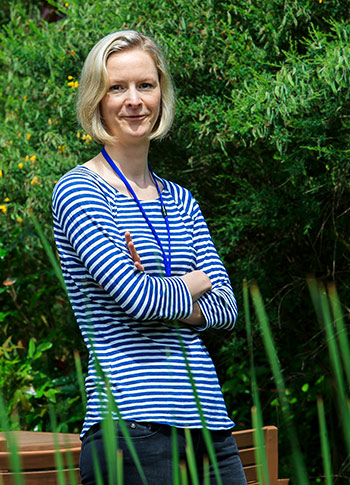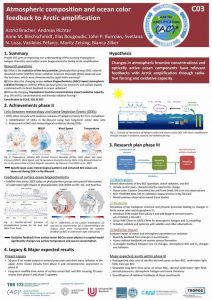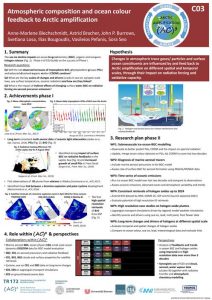C03: Atmospheric composition and ocean colour feedback to Arctic amplification
PIs: Astrid Bracher, Andreas Richter (former PIs: John P. Burrows, Anne-Marlene Blechschmidt)
The Arctic ocean contains phytoplankton and serves as a source of organic and inorganic trace gases, which all directly and indirectly impact radiation in the atmosphere. The biogeochemical processes driving the production and the exchange of these species between ocean and atmosphere, in turn, depend on temperature, radiation, and sea ice cover. Therefore, these exchange processes are affected by and can contribute to Arctic amplification.
This project studies two types of ocean-atmosphere feedbacks: the interaction of (i) ocean surface biogeochemistry (BGC) with radiation, and (ii) of halogen release from the ocean to the atmosphere via the cryosphere and the resulting tropospheric ozone depletion. Main results from the first two phases of (AC)³ are: According to the merged data set of more than two decades of satellite observations, BrO abundances during Arctic spring have increased by 15% per decade. The observed BrO-patterns are strongly driven by meteorological parameters (temperature, wind speed, first-year sea ice) as are local ozone depletion events in Ny-Ålesund. The spatial distribution of high BrO amounts has been successfully predicted using a neural network fed by meteorological data, but, this method did not reproduce the observed trend. Twenty years of satellite data, confirmed by in-situ observations, show that particularly in the Fram Strait, phytoplankton stocks have increased and now incorporate more smaller groups, which are impacting surface albedo. Numerical simulations using coupled ocean-ice-BGC modeling incorporating radiation feedbacks from biology to physics, have been performed. They show that higher summertime phytoplankton biomass (chlorophyll concentrations, Chl) and related enhanced colored dissolved organic matter (CDOM) lead to higher surface temperatures and consequently more sea ice melt. This shortens the sea ice season by up to one month. Further local increases of Chl and CDOM are expected due to reduced sea ice cover and increased permafrost thawing, which will amplify the observed Arctic surface warming.
In phase III, we plan to extend the time series of the above-named key parameters established in the previous project phases of (AC)³. These mainly consist of satellite (OLCI, GOME-2, TROPOMI) but also of in-situ and ground-based remote sensing observations, which will be used to monitor the rapid changes in ocean and atmosphere. Further, these data will be used to initialize and validate dedicated modeling of surface water BGC with FESOM2-REcoM2 and Arctic boundary layer ozone chemistry with WRF-Chem or, alternatively, GEOS-Chem. These models will provide all relevant parameters needed for assessing radiative feedbacks, and these will be evaluated based on their final simulations, focusing on their relevance for Arctic amplification.
Hypothesis:
Changes in atmospheric bromine concentrations and optically active ocean components have relevant feedbacks with Arctic amplification on different spatial and temporal scales through radiative forcing and oxidative capacity.
Studies will focus on the following central questions:
- What is the evolution of the key quantities observed (phytoplankton, CDOM, ocean radiation, BrO) over the last years, which were characterized by rapid Arctic warming?
- How does the changing ocean surface BGC impact atmospheric radiative forcing via indirect effects (aerosol pre-cursor emissions and carbon export) combined with its direct feedback to ocean radiation?
- How do changing tropospheric bromine concentrations impact oxidative capacity (O3 concentrations) and thereby radiative forcing?
This project contributes to the topic of Arctic amplification by evaluating the contribution of ocean surface BGC and halogen release to atmospheric radiative forcing in a changing Arctic (SQ1 and SQ3).
Achievements phase I
In C03 first consistent, long-term, and multi-sensor data sets of phytoplankton groups (PG) and BrO over the Arctic were obtained. The time series revealed changes over the last ten years towards smaller sized and increased growth of PG, but reduced carbon export in the Fram Strait (Engel et al., 2019). Furthermore, a close link between a bromine explosion event and polar cyclone development was discovered (Blechschmidt et al., 2016). A first observational evidence of a large IO plume emitted from a volcanic eruption in Alaska was revealed (Schönhardt et al., 2017). A new retrieval algorithm of BrO (Seo et al., 2019) has been developed for the new TROPOMI onboard the S5P satellite. In addition, the first 24 years date record of tropospheric BrO over the Arctic was created and first analyses undertaken.
Role within (AC)³
Members
Moritz Zeising
PhD
Alfred-Wegener-Insitute Helmholtz Center for Polar and Marine Research (AWI)
Bussestraße 24
27570 Bremerhaven
Prof. Dr. Astrid Bracher
Principal Investigator
Alfred-Wegener-Insitute Helmholtz Center for Polar and Marine Research (AWI)
Bussestraße 24
27570 Bremerhaven
phone:
e-mail:
Bianca Zilker
PhD
University of Bremen
Institute of Environmental Physics (IUP)
Otto-Hahn-Allee 1
28334 Bremen
Dr. Andreas Richter
Principal Investigator
University of Bremen
Institute of Environmental Physics
Otto-Hahn-Allee 1
28334 Bremen
Former Members
Dr. Vasileios Pefanis
PhD (in phase I)
Alfred-Wegener-Insitute Helmholtz Center for Polar and Marine Research (AWI)
Bussestraße 24
27570 Bremerhaven
Dr. Svetlana Losa
Senior Scientist
Alfred-Wegener-Insitute Helmholtz Center for Polar and Marine Research (AWI)
Bussestraße 24
27570 Bremerhaven
Dr. Mariana Soppa
Postdoc (in phase I)
Alfred-Wegener-Insitute Helmholtz Center for Polar and Marine Research (AWI)
Bussestraße 24
27570 Bremerhaven
Prof. Dr. John P. Burrows
Principal Investigator
University of Bremen
Institute of Environmental Physics
Otto-Hahn-Allee 1
28334 Bremen
Dr. Ilias Bougoudis
PhD (in phase I)
University of Bremen
Institute of Environmental Physics (IUP)
Otto-Hahn-Allee 1
28359 Bremen
Dr. Anne-Marlene Blechschmidt
Principal Investigator
University of Bremen
Institute of Environmental Physics
Otto-Hahn-Allee 1
28334 Bremen
Publications
2024
Rabe, B, Cox, CJ, Fang, Y-C, Goessling, H, Granskog, MA, Hoppmann, M, Hutchings, JK, Krumpen, T, Kuznetsov, I, Lei, R, Li, T, Maslowski, W, Nicolaus, M, Perovich, D, Persson, O, Regnery, J, Rigor, I, Shupe, MD, Sokolov, V, Spreen, G, Stanton, T, Watkins, DM, Blockley, E, Jakob Buenger, H, Cole, S, Fong, A, Haapala, J, Heuzé, C, Hoppe, CJM, Janout, M, Jutila, A, Katlein, C, Krishfield, R, Lin, L, Ludwig, V, Morgenstern, A, O’Brien, J, Zurita, AQ, Rackow, T, Riemann-Campe, K, Rohde, J, Shaw, W, Smolyanitsky, V, Solomon, A, Sperling, A, Tao, R, Toole, J, Tsamados, M, Zhu, J, Zuo, G, 2024. The MOSAiC Distributed Network: Observing the coupled Arctic system with multidisciplinary, coordinated platforms. Elem. Sci. Anth. 12(1). DOI: https://doi.org/10.1525/elementa.2023.00103
Weiß, J.F., von Appen, WJ., Niehoff, B., Nicole Hildebrand, M. Graeve, S. Neuhaus, A. Bracher, E.-M. Nöthig & K. Metfies, 2024: Unprecedented insights into extents of biological responses to physical forcing in an Arctic sub-mesoscale filament by combining high-resolution measurement approaches. Sci Rep 14, 8192. https://doi.org/10.1038/s41598-024-58511-y
2023
Ahmed, Shaddy, Thomas, Jennie L., Angot, Hélène, Dommergue, Aurélien, Archer, Stephen D., Bariteau, Ludovic, Beck, Ivo, Benavent, Nuria, Blechschmidt, Anne-Marlene, Blomquist, Byron, Boyer, Matthew, Christensen, Jesper H., Dahlke, Sandro, Dastoor, Ashu, Helmig, Detlev, Howard, Dean, Jacobi, Hans-Werner, Jokinen, Tuija, Lapere, Rémy, Laurila, Tiia, Quéléver, Lauriane L. J., Richter, Andreas, Ryjkov, Andrei, Mahajan, Anoop S., Marelle, Louis, Pfaffhuber, Katrine Aspmo, Posman, Kevin, Rinke, Annette, Saiz-Lopez, Alfonso, Schmale, Julia, Skov, Henrik , Steffen, Alexandra, Stupple, Geoff, Stutz, Jochen, Travnikov, Oleg, Zilker, Bianca, 2023; Modelling the coupled mercury-halogen-ozone cycle in the central Arctic during spring. Elem. Sci. Anth.; 11 (1): 00129. doi: https://doi.org/10.1525/elementa.2022.00129
Chen, Y., Liu, S., Zhu, L., Seo, S., Richter, A., Li, X., et al., 2023. Global observations of tropospheric bromine monoxide (BrO) columns from TROPOMI. J. Geophys. Res. Atmos., 128, e2023JD039091. https://doi.org/10.1029/2023JD039091
Zeppenfeld, S., van Pinxteren, M., Hartmann, M., Zeising, M., Bracher, A., and Herrmann, H., 2023: Marine carbohydrates in Arctic aerosol particles and fog – diversity of oceanic sources and atmospheric transformations, Atmos. Chem. Phys., 23, 15561–15587, https://doi.org/10.5194/acp-23-15561-2023.
Gürses, Ö., Oziel, L., Karakuş, O., Sidorenko, D., Völker, C., Ye, Y., Zeising, M., Butzin, M., and Hauck, J., 2023: Ocean biogeochemistry in the coupled ocean–sea ice–biogeochemistry model FESOM2.1–REcoM3, Geosci. Model Dev., 16, 4883–4936, https://doi.org/10.5194/gmd-16-4883-2023.
Zeising M., Oziel L., Gürses Ö., Hauck J., Heinold B., Losa S., Thoms S., van Pinxteren M., Völker C., Zeppenfeld S., Bracher A. (submitted 3 May 2023) Wide-spread Occurrence and Increasing Trend of Biogenic Aerosol Precursors in the Arctic Ocean Simulated by an Ocean Biogeochemical Model. Journal of Geophysical Research – Biogeosciences 10.22541/essoar.168332181.16821948/v1
Gabarró, C.; Hughes, N.; Wilkinson, J.; Bertino, L.; Bracher, A.; Diehl, T.; Dierking, W.; Gonzalez-Gambau, V.; Lavergne, T.; Madurell, T.; Malnes, E. & Wagner, P. M., 2023: Improving satellite-based monitoring of the polar regions: Identification of research and capacity gaps, Front. Rem. Sens., 4, https://doi.org/10.3389/frsen.2023.952091
Zilker, B.; Richter, A.; Blechschmidt, A.-M.; von der Gathen, P.; Bougoudis, I.; Seo, S.; Bösch, T. & Burrows, J. P., 2023: Investigation of meteorological conditions and BrO during Ozone Depletion Events in Ny-Ålesund between 2010 and 2021, Atmos. Chem. Phys., 23, 9787–9814, https://doi.org/10.5194/acp-23-9787-2023
Xi, H., Bretagnon, M., Losa, S. N., Brotas, V., Gomes, M., Peeken, I., Alvarado, L. M. A., Mangin, A., and Bracher, A., 2023: Satellite monitoring of surface phytoplankton functional types in the Atlantic Ocean over 20 years (2002–2021), in: 7th edition of the Copernicus Ocean State Report (OSR7), edited by: von Schuckmann, K., Moreira, L., Le Traon, P.-Y., Grégoire, M., Marcos, M., Staneva, J., Brasseur, P., Garric, G., Lionello, P., Karstensen, J., and Neukermans, G., Copernicus Publications, State Planet, 1-osr7, 5, https://doi.org/10.5194/sp-1-osr7-5-2023.
Wendisch, M.; Brückner, M.; Crewell, S.; Ehrlich, A.; Notholt, J.; Lüpkes, C.; Macke, A.; Burrows, J. P.; Rinke, A.; Quaas, J.; Maturilli, M.; Schemann, V.; Shupe, M. D.; Akansu, E. F.; Barrientos-Velasco, C.; Bärfuss, K.; Blechschmidt, A.-M.; Block, K.; Bougoudis, I.; Bozem, H.; Böckmann, C.; Bracher, A.; Bresson, H.; Bretschneider, L.; Buschmann, M.; Chechin, D. G.; Chylik, J.; Dahlke, S.; Deneke, H.; Dethloff, K.; Donth, T.; Dorn, W.; Dupuy, R.; Ebell, K.; Egerer, U.; Engelmann, R.; Eppers, O.; Gerdes, R.; Gierens, R.; Gorodetskaya, I. V.; Gottschalk, M.; Griesche, H.; Gryanik, V. M.; Handorf, D.; Harm-Altstädter, B.; Hartmann, J.; Hartmann, M.; Heinold, B.; Herber, A.; Herrmann, H.; Heygster, G.; Höschel, I.; Hofmann, Z.; Hölemann, J.; Hünerbein, A.; Jafariserajehlou, S.; Jäkel, E.; Jacobi, C.; Janout, M.; Jansen, F.; Jourdan, O.; Jurányi, Z.; Kalesse-Los, H.; Kanzow, T.; Käthner, R.; Kliesch, L. L.; Klingebiel, M.; Knudsen, E. M.; Kovács, T.; Körtke, W.; Krampe, D.; Kretzschmar, J.; Kreyling, D.; Kulla, B.; Kunkel, D.; Lampert, A.; Lauer, M.; Lelli, L.; von Lerber, A.; Linke, O.; Löhnert, U.; Lonardi, M.; Losa, S. N.; Losch, M.; Maahn, M.; Mech, M.; Mei, L.; Mertes, S.; Metzner, E.; Mewes, D.; Michaelis, J.; Mioche, G.; Moser, M.; Nakoudi, K.; Neggers, R.; Neuber, R.; Nomokonova, T.; Oelker, J.; Papakonstantinou-Presvelou, I.; Pätzold, F.; Pefanis, V.; Pohl, C.; van Pinxteren, M.; Radovan, A.; Rhein, M.; Rex, M.; Richter, A.; Risse, N.; Ritter, C.; Rostosky, P.; Rozanov, V. V.; Donoso, E. R.; Saavedra-Garfias, P.; Salzmann, M.; Schacht, J.; Schäfer, M.; Schneider, J.; Schnierstein, N.; Seifert, P.; Seo, S.; Siebert, H.; Soppa, M. A.; Spreen, G.; Stachlewska, I. S.; Stapf, J.; Stratmann, F.; Tegen, I.; Viceto, C.; Voigt, C.; Vountas, M.; Walbröl, A.; Walter, M.; Wehner, B.; Wex, H.; Willmes, S.; Zanatta, M. & Zeppenfeld, S., 2023: Atmospheric and Surface Processes, and Feedback Mechanisms Determining Arctic Amplification: A Review of First Results and Prospects of the (AC)³ Project, Bull. Am. Meteorol. Soc., American Meteorological Society, 104, E208–E242, https://doi.org/10.1175/bams-d-21-0218.1
2022
Valente, A., Sathyendranath, S., Brotas, V., Groom, S., Grant, M., Jackson, T., Chuprin, A., Taberner, M., Airs, R., Antoine, D., Arnone, R., Balch, W. M., Barker, K., Barlow, R., Bélanger, S., Berthon, J.-F., Beşiktepe, Ş., Borsheim, Y., Bracher, A., Brando, V., Brewin, R. J. W., Canuti, E., Chavez, F. P., Cianca, A., Claustre, H., Clementson, L., Crout, R., Ferreira, A., Freeman, S., Frouin, R., García-Soto, C., Gibb, S. W., Goericke, R., Gould, R., Guillocheau, N., Hooker, S. B., Hu, C., Kahru, M., Kampel, M., Klein, H., Kratzer, S., Kudela, R., Ledesma, J., Lohrenz, S., Loisel, H., Mannino, A., Martinez-Vicente, V., Matrai, P., McKee, D., Mitchell, B. G., Moisan, T., Montes, E., Muller-Karger, F., Neeley, A., Novak, M., O’Dowd, L., Ondrusek, M., Platt, T., Poulton, A. J., Repecaud, M., Röttgers, R., Schroeder, T., Smyth, T., Smythe-Wright, D., Sosik, H. M., Thomas, C., Thomas, R., Tilstone, G., Tracana, A., Twardowski, M., Vellucci, V., Voss, K., Werdell, J., Wernand, M., Wojtasiewicz, B., Wright, S., and Zibordi, G., 2022: A compilation of global bio-optical in situ data for ocean colour satellite applications – version three, Earth Syst. Sci. Data, 14, 5737–5770, https://doi.org/10.5194/essd-14-5737-2022.
Álvarez, E., Losa, S. N., Bracher, A., Thoms, S., & Völker, C., 2022. Phytoplankton light absorption impacted by photoprotective carotenoids in a global ocean spectrally-resolved biogeochemistry model. J. Adv. Model. Earth Syst., 14, e2022MS003126. https://doi.org/10.1029/2022MS003126
Benavent, N., Mahajan, A.S., Li, Q. et al., incl. Blechschmidt, A.-M., Zilker, B., Richter, A., 2022. Substantial contribution of iodine to Arctic ozone destruction. Nat. Geosci., https://doi.org/10.1038/s41561-022-01018-w
Oelker J., Losa S. N., Richter A., Bracher A., 2022: TROPOMI-retrieved underwater light attenuation in three spectral regions in the ultraviolet to blue. Front. Mar. Sci. 9. 787992. doi: 10.3389/fmars.2022.787992
Bougoudis, I., Blechschmidt, A.-M., Richter, A., Seo, S., and Burrows, J. P., 2022: Simulating tropospheric BrO in the Arctic using an artificial neural network, Atmos. Environ., 276, 119032, https://doi.org/10.1016/j.atmosenv.2022.119032.
2021
Bougoudis, I., 2021: Satellite based remote sensing of halogens in the Arctic troposphere,under the impact of Arctic Amplification, Dissertation, Universität Bremen, https://doi.org/10.26092/elib/1115
Pefanis, V., 2021: Loading of coloured dissolved organic matter in the Arctic Mediterranean Sea and its effects on the ocean heat budget, Dissertation, Universität Bremen, http://dx.doi.org/10.26092/elib/646.
Xi, H., Losa, S.N., Mangin, A., Garnesson, P., Bretagnon, M., Demaria, J., Soppa, M.A., d’Andon, O.H.F., Bracher, A., 2021. Global chlorophyll a concentrations of phytoplankton functional types with detailed uncertainty assessment using multi-sensor ocean color and sea surface temperature satellite products. J. Geophys. Res. Oceans, doi: 10.1029/2020JC017127
2020
Yang, X., Blechschmidt, A.-M., Bognar, K., McClure-Begley, A., Morris, S., Petropavlovskikh, I., Richter, A., Skov, H., Strong, K., Tarasick, D. W., Uttal, T., Vestenius, M., and Zhao, X., 2020: Pan-Arctic surface ozone: modelling vs. measurements, Atmos. Chem. Phys., 20, 15937–15967, https://doi.org/10.5194/acp-20-15937-2020.
Seo, S., 2020: Retrieval and analysis of tropospheric bromine monoxide enhancements in polar regions using satellite measurements, Dissertation, Universität Bremen, https://doi.org/10.26092/elib/425
Pefanis, V., Losa, S. N., Losch, M., Janout, M. A., & Bracher, A., 2020. Amplified Arctic surface warming and sea ice loss due to phytoplankton and colored dissolved material. Geophys. Res. Lett., 47, e2020GL088795, https://doi.org/10.1029/2020GL088795
Seo, S., Richter, A., Blechschmidt, A.-M., Bougoudis, I., and Burrows, J. P., 2020: Spatial distribution of enhanced BrO and its relation to meteorological parameters in Arctic and Antarctic sea ice regions, Atmos. Chem. Phys., 20, 12285–12312, https://doi.org/10.5194/acp-20-12285-2020
Bougoudis, I., Blechschmidt, A.-M., Richter, A., Seo, S., Burrows, J. P., Theys, N., and Rinke, A., 2020: Long-term time series of Arctic tropospheric BrO derived from UV–VIS satellite remote sensing and its relation to first-year sea ice, Atmos. Chem. Phys., 20, 11869–11892, https://doi.org/10.5194/acp-20-11869-2020.
Nakoudi, K.; Ritter, C.; Böckmann, C.; Kunkel, D.; Eppers, O.; Rozanov, V.; Mei, L.; Pefanis, V.; Jäkel, E.; Herber, A.; Maturilli, M.; Neuber, R. ,2020. Does the Intra-Arctic Modification of Long-Range Transported Aerosol Affect the Local Radiative Budget? (A Case Study). Remote Sens., 12, 2112, https://www.mdpi.com/2072-4292/12/13/2112.
Nöthig E.-M., Ramendenc S., Haas A., Hehemann L., Walter A., Bracher A., Lalande C., Metfies K., Peeken I., Bauerfeind E., Boetius A., 2020: Summertime in situ chlorophyll a and particulate organic carbon standing stocks in surface waters of the Fram Strait and the Arctic Ocean (1991 – 2015). Frontiers in Marine Science 7: 350. doi: 10.3389/fmars.2020.00350 https://www.frontiersin.org/articles/10.3389/fmars.2020.00350/full
Pradhan H. K., Völker C., Losa S. N., Bracher A., Nerger L. 2020: Global assimilation of ocean-color data of phytoplankton functional types: Impact of different datasets. Journal of Geophysical Research Oceans, 125, e2019JC015586, https://doi.org/10.1029/2019JC015586
2019
Pradhan, H. K., Völker, C., Losa, S. N., Bracher, A., & Nerger, L., 2019. Assimilation of global total chlorophyll OC‐CCI data and its impact on individual phytoplankton fields. J. Geophys. Res. Oceans, 124, 470 – 490. https://doi.org/10.1029/2018JC014329
Zeppenfeld, S., M. van Pinxteren, M. Hartmann, A. Bracher, F. Stratmann, and H. Herrmann, 2019: Glucose as a potential chemical marker for ice nucleating activity in Arctic seawater and melt pond samples, Environ. Sci. Technol., 53, 15, 8747–8756 https://doi.org/10.1021/acs.est.9b01469
Álvarez E., Thoms S., Bracher A., Liu Y., Völker C., 2019: Modeling Photoprotection at Global Scale: The Relative Role of Nonphotosynthetic Pigments, Physiological State, and Species Composition. Global Biogeochem. Cycles, 33: 904-924. DOI: 10.1029/2018GB006101
Fernandez, R.P., A. Carmona-Balea, C.A. Cuevas, J.A. Barrera, D.E. Kinnison, J.-F. Lamarque, C. Blaszczak-Boxe, K. Kim, W. Choi, T. Hay, A.-M. Blechschmidt, A. Schönhardt, J.P. Burrows, and A. Saiz-Lopez, 2019: Modeling the Sources and Chemistry of Polar Tropospheric Halogens (Cl, Br, I) using the CAM-Chem Global Chemistry-Climate Model, accepted for publication in J. Adv. Model Earth Sy., doi:10.1029/2019MS001655
Seo, S., A. Richter, A.-M. Blechschmidt, I. Bougoudis, and J.P. Burrows, 2019: First high resolution BrO column retrievals from TROPOMI, Atmos. Meas. Tech., 12, 2913-2932, doi:10.5194/amt-12-2913-2019
Soppa, M.A., V. Pefanis, S. Hellmann, S.N. Losa, J. Hölemann, M.A. Janout, F. Martynov, B. Heim, T. Dinter, V. Rozanov, and A. Bracher, 2019: Assessing the Influence of Water Constituents on the Radiative Heating of Laptev Sea Shelf Waters, Frontiers in Marine Science, 6, Article 221, doi:10.3389/fmars.2019.00221
Oelker, J., A. Richter, T. Dinter, V.V. Rozanov, J.P. Burrows, and A. Bracher, 2019: Global diffuse attenuation coefficient derived from vibrational Raman scattering detected in hyperspectral backscattered satellite spectra, Optics Express, 27, 2, A829-A855, doi:10.1364/OE.27.00A829
Engel A., A. Bracher, T. Dinter, S. Endres, J. Grosse, K. Metfies, I. Peeken, J. Piontek, I. Salter, E.-M. Nöthig, 2019: Inter-annual variability of organic carbon concentrations across the Fram Strait (Arctic Ocean) during summer 2009 -2017, Frontiers in Marine Science. section Global Change and the Future Ocean, 6, 187, doi:10.3389/fmars.2019.00187
Liu, Y., E. Boss, A.P. Chase, H. Xi, X. Zhang, R. Röttgers, Y. Pan, and A. Bracher, 2019: Retrieval of phytoplankton pigments and functional types from underway spectrophotometry in the Fram Strait, Remote Sensing, 11(3), 318, doi:10.3390/rs11030318
2018
Liu. Y., Roettgers R., Ramírez-Pérez M., Dinter T., Steinmetz F., Noethig E.-M., Hellmann S., Wiegmann S., Bracher A., 2018: Underway spectrophotometry in the Fram Strait (European Arctic Ocean): a highly resolved chlorophyll a data source for complementing satellite ocean color, Optics Express, 26, 14, A678, doi:10.1364/OE.26.00A678.
Data supplement is available here.
Losa S., Soppa M. A., Dinter T., Wolanin A., Brewin R. J. W., Bricaud A., Oelker J., Peeken I., Gentili B., Rozanov. V. V., Bracher A., 2017: Synergistic exploitation of hyper- and multispectral precursor Sentinel measurements to determine Phytoplankton Functional Types at best spatial and temporal resolution (SynSenPFT), Front. Mar. Sci., 4:203, doi:10.3389/fmars.2017.00203
Data supplement is available here.
Rozanov V.V., T. Dinter, A.V. Rozanov, A. Wolanin, A. Bracher, Burrows J.P., 2017: Radiative transfer modeling through terrestrial atmosphere and ocean accounting for inelastic scattering processes: Software package SCIATRAN. J. Quant. Spectrosc. Rad. Transfer, 194, 65-85, doi:10.1016/j.jqsrt.2017.03.009
2017: Space based observation of volcanic iodine monoxide, Atmos. Chem. Phys., 17, 4857-4870, doi:10.5194/acp-2016-619
Blechschmidt, A.-M., Richter, A.,Burrows, J. P., Kaleschke, L., Strong, K., Theys, N., Weber, M., Zhao, X., and Zien, A., 2016: An exemplary case of a bromine explosion event linked to cyclone development in the Arctic, Atmos. Chem. Phys.,16, 1773-1788, doi:10.5194/acp-16-1773-2016

